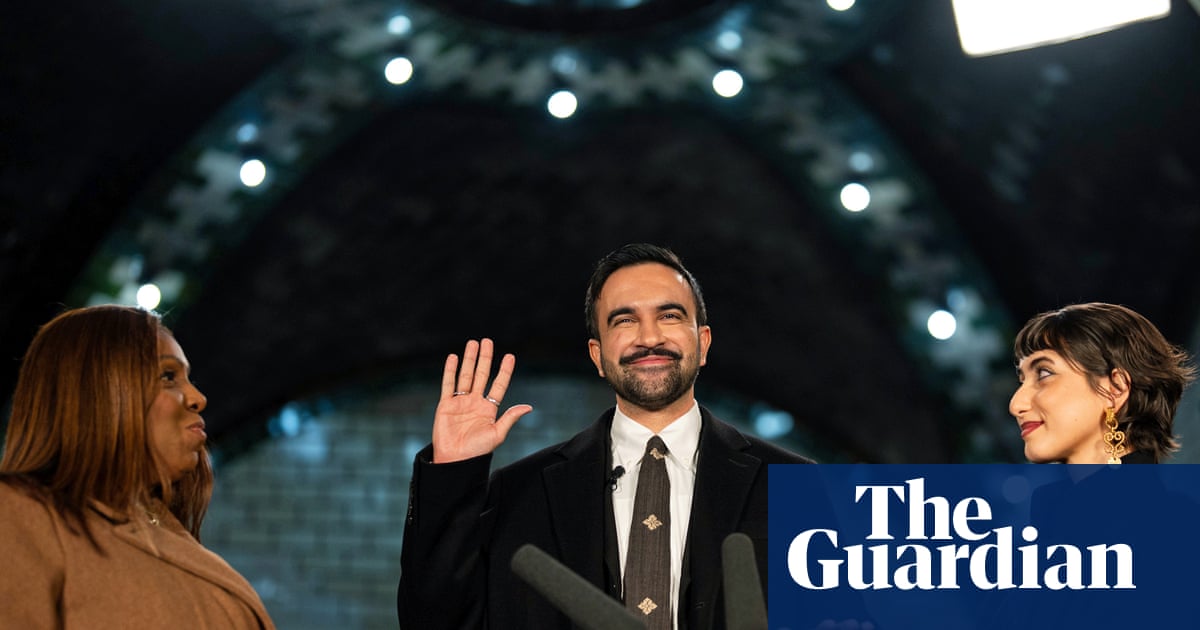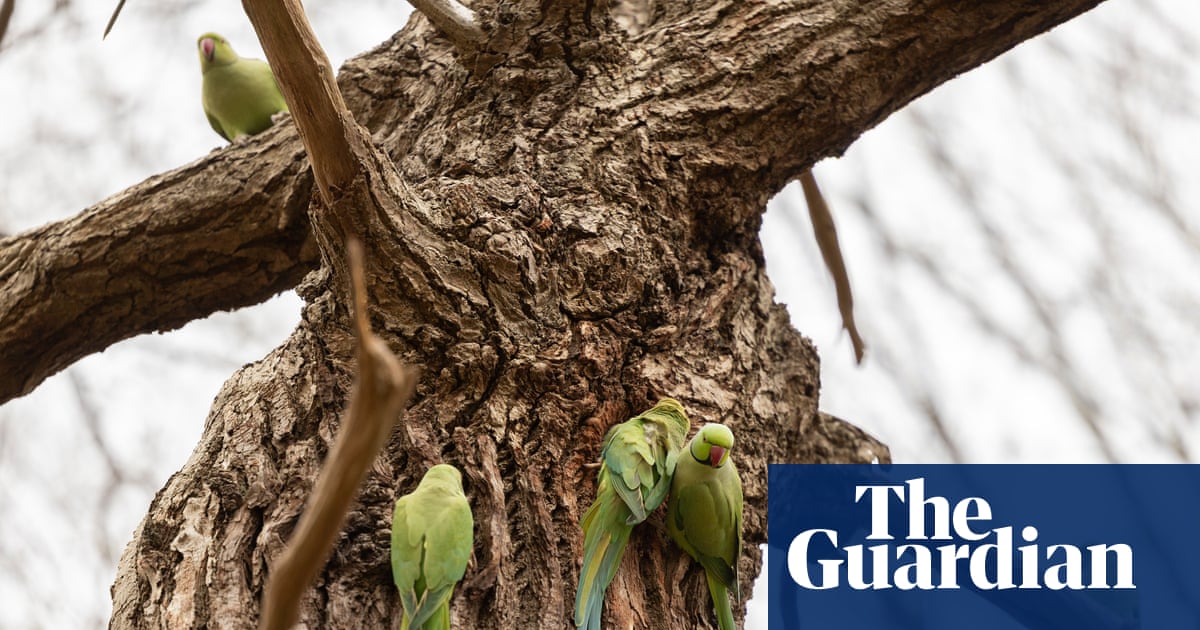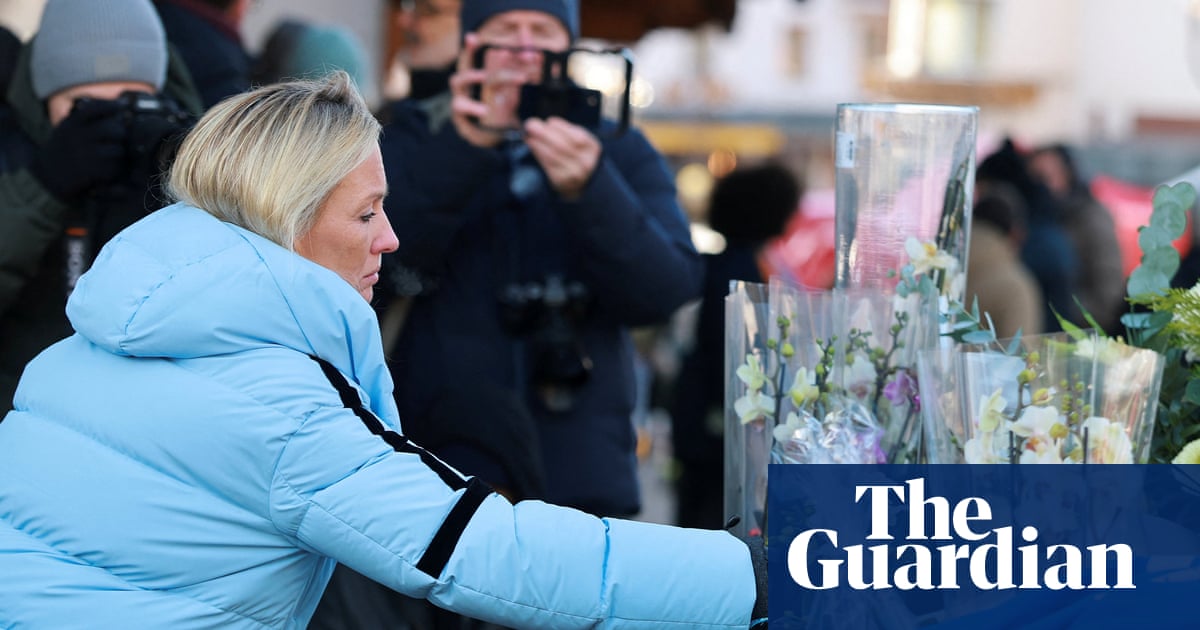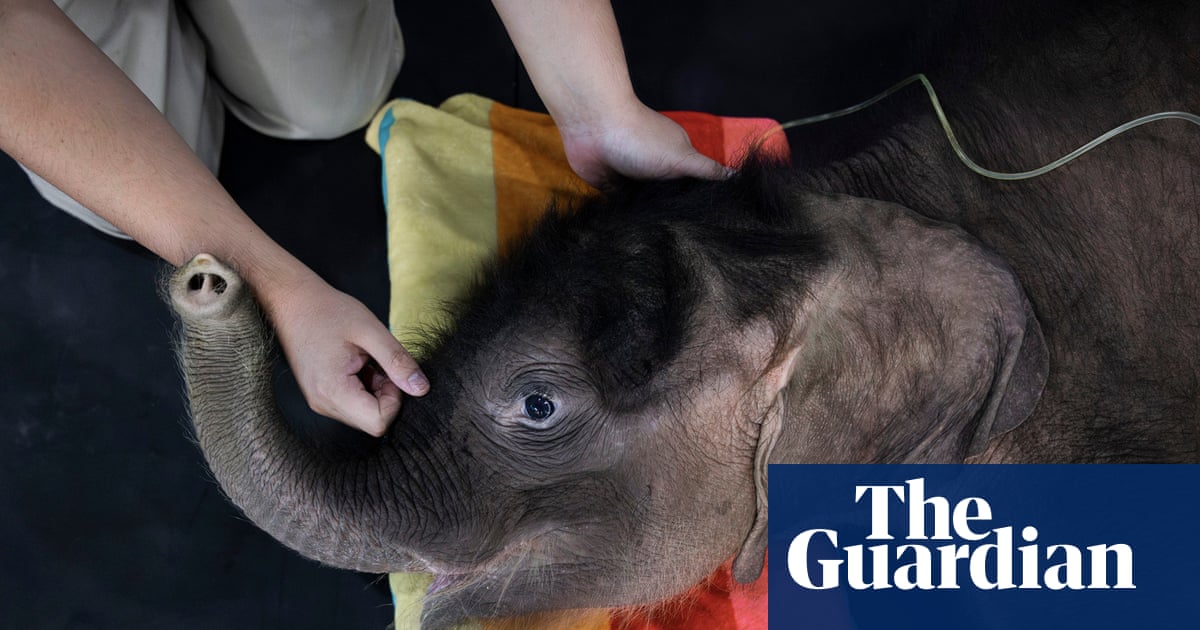Not unreasonably, Mariam Abdelghaffa had imagined her life as a grandmother would be somewhat different. As it was, on the morning of 11 August, she found herself bent double in a trench, awaiting the next onslaught.
It arrived after dawn. She aimed her ancient AK-47 at the pickup trucks racing towards her. Rockets screeched overhead. Suicide drones the size of light aircraft loomed above. Shells rained down.
A nearby row of mud-brick homes vanished. The blasts came closer. Too close. Abdelghaffa was blown backwards. Her neck was wet with blood.
The mother of five was carried from the frontline: El Fasher’s ambulances had run out of fuel months earlier. Someone pressed a rag on the 75-year-old’s neck. Bandages, too, were exhausted. There was no medicine either.
“We couldn’t lose Mariam. She was our oldest fighter,” says Fatima Ali.
Across the city, Sāra Bakhit crouched beside artillery near the disused airport. She ordered suppressive fire to prevent the paramilitary Rapid Support Forces (RSF) overwhelming Abdelghaffa’s position.
What is happening in Sudan?
ShowFighting broke out in Khartoum, Sudan’s capital, on 15 April 2023 as an escalating power struggle between the two main factions of the military regime finally turned deadly.
On one side are the Sudanese armed forces, who remain broadly loyal to Gen Abdel Fattah al-Burhan, the country’s de facto ruler. Against him are the paramilitaries of the Rapid Support Forces (RSF), a collection of militias who follow the former warlord Gen Mohamed Hamdan Dagalo, known as Hemedti.
The RSF was initially founded by the former dictatorial ruler Omar al-Bashir as an Arab counterinsurgency militia called the Janjaweed, which quickly became synonymous with widespread atrocities. In 2013, Bashir transformed the group into the RSF, deploying them to crush a fresh rebellion in South Darfur.
The conflict has plunged Sudan into “one of the worst humanitarian nightmares in recent history”, according to UN officials. It has created the world’s worst displacement crisis, scattering more than 10 million people internally and 4 million who have fled into neighbouring countries, putting mounting pressure on Chad and South Sudan.
Famous for her gap-toothed perma-grin, the 43-year-old single mother was an El Fasher legend, the survivor of more than 150 battles. If she fell, everyone agreed, so would the city.
“But the fighting is getting very dangerous. Their snipers constantly target me,” she says.
Reports indicated the RSF was advancing south, deeper into the city, in its push to capture the Sudan military’s final stronghold in the Darfur region. Women were abducted. Others, executed on the spot. “We fight to survive. We have no choice but to protect our families,” says Bakhit.
For six hours the battle swung to and fro. Then, abruptly, the RSF retreated to their trenches surrounding the city.
Bakhit cheered, but tonight there would be no celebratory feast. Food supplies in the city were spent.
El Fasher had been under siege for more than 500 days. In May 2024, the UN warned it teetered on the “brink of famine”. No aid has entered since.
The August battle that wounded Abdelghaffa was the RSF’s 228th attempt to seize the city.
The struggle for El Fasher remains the defining showdown of Sudan’s cataclysmic war between its army and the RSF. Victory for the RSF means total control over western Sudan, cleaving the vast nation in half.
Somehow, against all odds, El Fasher has not fallen. Its defenders – a hotchpotch of volunteers like Abdelghaffa, rebels such as Bakhit and a depleted infantry battalion – have been shoehorned into a shrinking slice of the pulverised city with 260,000 trapped residents, half of them children.
“It’s a medieval siege; something you’d expect in the middle ages,” says Sheldon Yett of Unicef.
Yet aid has not entered for nearly 18 months. The reason, according to leaked documents, intelligence sources and senior UN officials, raises profound questions over the international community’s priorities.
The evidence indicates a key US and UK ally intervened to effectively derail lifesaving humanitarian aid entering El Fasher.
The United Arab Emirates (UAE) intruded at a critical stage; hundreds of children are believed to have since died from starvation in the city.
The US state department officials have directly implored the petrostate to back a pause in fighting and allow aid into El Fasher.
Senior UN humanitarian officials also negotiated directly – to no avail.
Informed sources monitoring the crisis claim that one of the longest urban sieges of modern warfare has only been possible because of such backing.
“The UAE is the lifeline to the siege. Without its support, the RSF would have called it off.”
Intelligence assessments indicate that the RSF is bent on ethnic cleansing should El Fasher fall. Model scenarios forecast thousands will be massacred.
The assessments confirmed the RSF wanted to overrun the city during the rainy season, which started in early June and brought cloud, which the aggressors knew would make it harder for satellites to capture war crimes.
And as the June skies above El Fasher darkened, Abdelghaffa was summoned to the city’s northern front. RSF reinforcements were massing. The endgame had begun.
June 2025
2 June
Vulnerable people exposed to famine and death
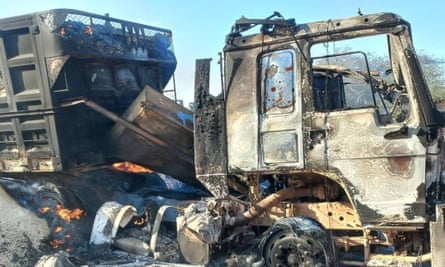
A convoy trundled across north Darfur’s desert, three hours from El Fasher. Fifteen trucks: each driver as nervous as the next. No truck had reached the city since April 2024.
Four thousand kilometres north, David Lammy – then UK foreign secretary – was holding court at a five-star hotel in Marrakech, Morocco. Earlier, he had unveiled the UK’s new approach to Africa, yet one country now held his attention.
Castigating the world for its “ambivalence” towards Sudan’s war, Lammy confirmed it as the world’s “worst humanitarian catastrophe”.
Ground zero was El Fasher, and the situation was about to worsen. Shortly after Lammy’s speech, the Darfur convoy was devastated by an airstrike. In El Fasher, the news brought despair.
Abdessalam Kitir, 50, who lived near the university with his wife and son, says: “It confirmed we were on our own. Vulnerable people were left exposed to famine, death.”

15 June
Grandmother Mariam Abdelghaffa joins the frontline
Abdelghaffa had seen what violence did: the genocide two decades ago that slaughtered 300,000 of the ethnic African tribes, surviving members of which now crammed into El Fasher for protection.
Mariam Abdelghaffa with fellow soldiers defending El FasherWhen war erupted the septuagenarian had volunteered to make kissra for the rebels. Food supplies soon dried to a trickle. More fighters were needed. “I had no option. To the front I must go,” she told her friend Ibrahim Ahmed.
The RSF, the latest iteration of the Arab militias who perpetrated the genocide, had embarked on a recruitment surge. Thousands of their fighters encircled the city. Keeping them at bay was getting harder. The attackers wielded hi-tech weaponry which, sources allege, was being flown into Nyala, 120 miles (193km) south.
The nearest advancing friendly forces were 350 miles east. Their ranks included Bakhit’s youngest son. “He will come to liberate us,” she laughs.
Unlike Abdelghaffa, Bakhit had fought before. She had battled Darfur’s Arab militias as a teenager. Later, they had killed her husband. The RSF was even responsible for her trademark grin: a fighter had jabbed his rifle into her mouth.

The 214th attack on El Fasher concentrated on Abu Shouk, the immense displacement camp at the city’s northern edge. It was the biggest for months. “They had new weapons. The whole city shook,” says Adam Mohammed, a resident.
Howitzers obliterated homes. Suicide drones approached from the east. Fighters advanced.
Abdelghaffa could not let Abu Shouk fall, a safe haven for those who had fled the genocide. Plus it held El Fasher’s final functioning market, Naivasha, where supplies were down to five sacks of millet.
At 5pm the RSF withdrew. Abdelghaffa’s unit of volunteers had defended the market – for another day, at least.
Kitir heard the guns fall silent. A former official for the UN’s dissolved Darfur peacekeeping operation, he did not abandon the city he cherished.
But another long night lay ahead. Staples such as sorghum had almost disappeared. Most community kitchens were closing: there was nothing to cook. Children ate locusts. Well-connected individuals like Kitir sporadically acquired meat, but it was getting harder. The siege was tightening.
Displaced children eat locusts in Tawila north of El Fasher16 June
UK refuses to hand over responsibility
Intelligence indicated the attack 24 hours earlier on El Fasher was meant to overrun the city. There were candid warnings of ethnic cleansing.
An emergency session of the UN security council (UNSC) on Sudan was called. El Fasher was careering towards cataclysm. Malnourished children were dying daily.
Some diplomats felt the siege was not being taken seriously. “Where was the action? The urgency?” says one.
A UNSC resolution had urged an end to the siege, but that was a year ago. The noose around El Fasher’s neck had since tightened.
Concern was mounting over the UK’s approach. As council “penholder” on Sudan, it was responsible for galvanising global response.
Yet Russia had vowed to veto any UK resolution, negating its influence. A solution was engineered. Representing Africa, Sierra Leone, Somalia and Algeria offered to look after Sudan.
The UK refused to cede control. “The UK was providing political cover for the UAE,” alleges a UN investigator. Silencing the security council on El Fasher, they claim, blocked scrutiny of the UAE’s role. Jenny Chapman, development minister, said the UK used its position at the UN and elsewhere to “apply diplomatic pressure”.
27 June
Emirati investments versus starving children

Another UN security council session on Sudan was called. Internal pressure was growing to secure a reprieve for El Fasher. Inside the city, families had started chewing leaves to survive. Presenting evidence to the council was Sudan specialist Shayna Lewis. Days earlier she had returned from the country, enraged.
Without naming the UK, Lewis condemned the complicity of states “who continue to prioritise Emirati investments” over El Fasher’s starving families.
Where, she wondered, was the council’s conscience? A year earlier, discussions involved UN troops in Darfur forcing their way into El Fasher if needed. States privately discussed sanctioning the UAE.
Now, ambitions had lowered. The UNSC settled on pursuing a week-long humanitarian pause.
Lewis left the UN’s headquarters deflated. Convinced genocide was impending, she feared the council was “satisfied issuing statements”.
30 June
Secret negotiations take place
The UN’s humanitarian pause was rejected by the RSF. To reinforce this, rockets pounded El Fasher. RSF fighters stormed towards the centre, reaching Tijaniya Mosque.
In the north, Abdelghaffa held her position. Bakhit’s artillery helped push back the attackers. Throughout, the mother of three was targeted by snipers.
Despite the RSF’s public rejection of a humanitarian pause, internal documents reveal a different story.
A secret meeting at an undisclosed location occured between US and UN officials and chief RSF negotiator, Brig Gen Omar Hamdan.
The meeting was considered a triumph. Hopes soared that aid would shortly be allowed into El Fasher.
Documents state: “While no formal commitment was made regarding the pause in El Fasher, RSF leadership indicated the proposal would be reviewed internally. A response would follow pending further consultations.”
Such consultations, said sources, would involve the UAE. Previously, the Emiratis had stated support for humanitarian pauses.
Optimism was so high that UN officials felt it was now a question of when, not if.
Articulating the mood, one document adds that “in anticipation of the pause in El Fasher,” preparations are to immediately begin to “strategically preposition critical relief supplies across key locations in Darfur to enable rapid deployment”.
Convoys laden with aid for El Fasher were readied.
July
2 July
London silent as new burial mounds revealed
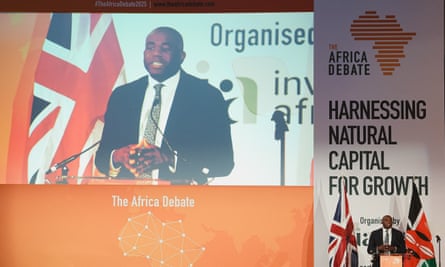
A capacity crowd squeezed into London’s Guildhall for a keynote Africa speech by David Lammy. Urging a relationship reset, he name-checked 10 countries from the continent. Its third largest, Sudan, was not mentioned.
In Port Sudan, “multiple outreach attempts” to RSF leaders were being made by UN officials, desperate to establish how aid might enter El Fasher. Time was tight. Satellites documented hundreds of new burial mounds within the city.
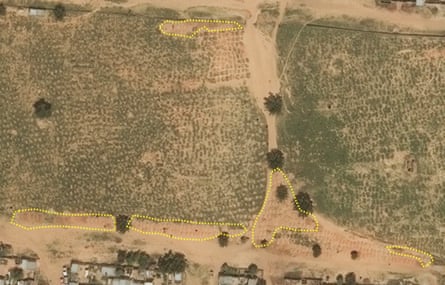
The US was vexed at the lack of urgency. It began lobbying Mohamed Hamdan “Hemedti” Dagalo, the RSF leader sanctioned over atrocities in Darfur.
“The US has emerged as the most actively engaged, undertaking direct outreach to the RSF leadership,” observe UN documents.
Elsewhere, the UK and others were assigned to drum up diplomatic support for El Fasher. In Nyala, the aid convoy was ready. “We waited for the green light,” says a UN official.
7 July
Civilians forced to eat animal feed
Bakhit had never experienced hunger like it. The city’s takiya – which distributed donated food – closed. It had nothing to share. In Naivasha, a few hardy traders hawked the little they had. “We are close to starvation,” says Bakhit.
Animal feed sold for human consumptionPeople turned to ambaz, an unappetising brown sludge made from pressed peanuts traditionally fed to livestock. Ambaz gave children cramps and diarrhea.
Despite it being chronically deficient in essential vitamins and minerals, the demand for ambaz outstripped supply. Abdelghaffa and Bakhit survived on a single daily serving.
At this stage, academics believed El Fasher’s population was likely enduring unprecedented levels of starvation.
Unpublished provisional data documenting the impact of a lengthy siege in Jebel Aulia, central Sudan, detected “extremely elevated” levels of malnutrition, higher than ever previously documented there.
11 July
Hungry defenders are outnumbered
Daylight heralded another offensive, this time from the south. Lookouts confirmed that the 220th attempt to seize the city was the biggest yet.
Bakhit tried forcing the attackers back, but the city’s hungry defenders were outpowered and outnumbered.
“So much new weaponry was arriving at El Fasher that even the RSF was overwhelmed by the pace of its arrival,” says an arms investigator.
For seven hours the RSF advanced, capturing the cattle market, prison and a military headquarters. By mid afternoon, the attackers were only a mile from Bakhit.
Dusk fell; the RSF retreated. Bakhit viewed this as a hollow victory. The attack was the first time the RSF had invaded her city in sizeable numbers since the siege began.
In London and Washington, real-time satellites had tracked the incursion. The assessment from analysts was ominous.
A security source says: “El Fasher was wobbling. How long could it hang on?”
15 July
Humiliation, torture and execution
The siege deepened. Anyone leaving or entering El Fasher was apprehended. Traders were whipped and beaten. Some were humiliated: forced to jive to Arab music or “baa” like sheep. Others were simply executed.
Two videos show RSF fighters humiliating civilians – videoInside the city, Kitir endured the constant shelling. Any fledgling hopes of fleeing with his family faded. All he could do was wait for help that might never materialise.
“We will never, ever escape,” he says.
Bakhit, meanwhile, insisted victory was achievable. “We will win this!” she told everyone she met.
Two decades ago, she had met the then UN secretary-general Kofi Annan in Darfur as the west rallied to safeguard survivors of the genocide.
Bakhit wondered why the world wouldn’t come to their rescue again. Regardless, she was prepared to fight to the death.
She had no inkling that, three hours away in Nyala, help for El Fasher was being assembled. In a central warehouse, 28 trucks waited with medical equipment and food for 100,000 people. A UN source says: “We were all set. What was the hold up?”
18 July
Food aid for 40,000 people is destroyed
Finally, the RSF responded to demands for a humanitarian pause. Hopes of a reprieve for El Fasher shrivelled. A written response from the group concluded aid into the city was “not feasible”.
A shred of hope, however, emerged from the RSF correspondence: it was willing to open humanitarian corridors to facilitate the “safe exit of civilians”.
Was it a trap? Intelligence indicated the RSF believed “no more civilians” remained in El Fasher. It also wanted to kill every fighter.
In Nyala, the convoy was partly disassembled. Significant quantities of aid had spoiled: food for 40,000 people was destroyed.
27 July
RSF walls in the city
Around El Fasher, satellites observed something odd sprouting from the desert. Imposing earthworks – at least 9 miles long – encircling the city.
The city was being walled in by the RSF. Access to El Fasher was increasingly restricted to a 50-yard gap between the berms where RSF guards executed passersby.
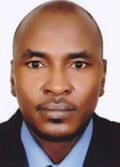
“It is like a moat. Entering the city has become forbidden,” says Kitir. Even less food was entering the city: ambaz was becoming scarce. The shelling, meanwhile, was getting heavier. His neighbours joined first aid classes in case relatives were hit.
While the giant berms stopped food getting in, they also prevented people leaving. People were shot scrambling over the earthworks at night. A “kill box” suffocated the city.
“Anyone who leaves is abducted, robbed or worse. We have no choice but to stay,” says Kitir.
But staying meant starvation. El Fasher’s fate had been effectively decided at another secret meeting days earlier. UN officials had again met RSF negotiator Hamdan, pleading for a show of clemency.
Hamdan’s mood had hardened. Lingering hopes of a humanitarian pause were dashed. Allowing aid in, said Hamdan, was now “untenable”.
August
3 August
RSF hire mercenaries to increase their firepower
Attempts to overrun El Fasher became international. Foreign fighters congregated outside its periphery. Bakhit says she witnessed Libyans, Ethiopians and Colombians alongside the RSF. Friends reported they had heard shouting in Spanish.
Fighters purported to be Colombian mercenaries shoot near an El Fasher mosqueRSF reinforcements poured in from the Sahel, too. Inside El Fasher, the worst time was the pre-bombardment calm, says Kitir.
“Everybody fears the first shell – the bomb of the martyrs. So unpredictable. After, everybody finds cover.”
Cover meant trenches. Everyone crouched in them, counting the shells, for hours at a time. Kitir became adept at distinguishing the sounds of the weaponry deployed to kill him: the booming of an AH-4 howitzer, the scream of Katyusha rocket launchers.
But it was the suicide drones that most shredded the nerves. Day and night they buzzed above his neighbourhood.
7 August
The ‘safe passage’ trap
It was a trap. The RSF’s promise of safe passage was precisely the opposite. Entire groups who made a break for freedom were murdered. A party of 50 civilians was abducted.
Sporadic footage surfaced of atrocities. The most notorious involved a Naivasha market restaurateur, executed by an RSF officer. Kitir knew his neighbour. He left behind a young son.
The little food on sale was prohibitively expensive: seven times higher than usual.
Priced out, Kitir turned to ambaz. He sent an image of a bowl he shared with his chickens.
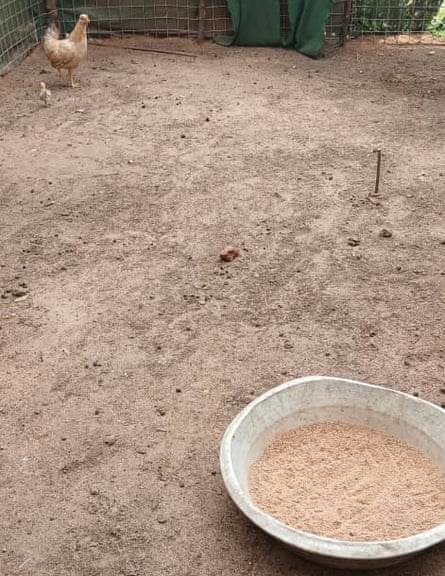
Bakhit worried where her next meal was coming from.
The shelling worsened, running continuously from 10am to 6pm. Kitir waited in the trenches, counting the bombs. “Between 200 and 300 at a time, all targeting civilian areas.”
10 August
No reprieve
Faced with overwhelming evidence that the RSF was readying to overrun El Fasher, senior UN officials agreed they had to pressure those the RSF obeyed: the Emirates.
Documents confirm “intensified” diplomatic pressure directed towards the UAE.
The US came fully on board. Senior state department figures, including Peter Lord, implored officials from UAE’s ministry of foreign affairs to lift the siege.
Lord knew what was at stake. Second in command of the bureau of African affairs, his previous role was senior adviser for Sudan.
Lord understood the potential for genocide should the RSF take El Fasher.
But the US’s efforts – described as “sustained pressure” in documents – yielded no late reprieve.
Increasingly exasperated, the US wanted the RSF and army in the same room. A summit on Sudan was arranged for Geneva, Switzerland. There, US officials would meet UAE representatives in another attempt to secure clemency for El Fasher.
Far from acquiescing, documents reveal that the UAE appears to have actively intervened to thwart prospects of a humanitarian pause for the besieged city. The UAE declined to comment.
Instead of supporting aid into El Fasher, the UAE advocated tying the city’s predicament to the agreement of a series of other humanitarian pauses for besieged towns in neighbouring Kordofan.
The plan all but killed off help for El Fasher. The UAE’s suggestion meant a significantly more onerous, complex strategy was required.
“UAE informally indicated that there may be more traction if El Fasher and Kordofan were discussed as a set – ie the RSF could be seen as ‘having lost the political game’ if they allow the pause to happen only in El Fasher,” the documents reveal.
Digesting the Emiratis’ intervention, UN officials reluctantly began identifying “operationally viable locations” within Kordofan, a process that meant new negotiations with no guarantee of success.
Cajoling the Emirates was seen by many as the last throw of the dice. Help for El Fasher had never felt so elusive.
11 August
Attack on Abu Shouk

Volley after volley of artillery pounded the flimsy homes in Abu Shouk. Hundreds of residents, many carrying children, streamed south. Abdelghaffa waited near the market. Dozens of RSF pickups sped south, shooting at residents crawling away.
Abdelghaffa was injured and had to be carried towards the airport. Two of her children were among 19 wounded. When the RSF withdrew, more than 50 civilians lay dead amid the camp’s ruins.
13 August
Aid convoys restocked as hopes rise
The attack on Abu Shouk – a blatant violation of international law – focused the attention of the UNSC. A council statement again urged an end to the siege and confirmed the RSF was deliberately targeting civilians. No fresh sanctions, however, were directed against the RSF’s leadership.
In Nyala, the convoy for El Fasher was restocked. Blind optimism according to some, but expectations were galvanised by the prospect of talks in Geneva the following day.
Hopes quickly curdled: neither the RSF or Sudanese army turned up.
In El Fasher, Bakhit visited Al Saudi hospital where Abdelghaffa was recuperating. “I offered Mariam my support for a full recovery.”
Mariam Abdelghaffa, the oldest soldier in El Fasher, says she was hit in the neckBakhit was worried whether Abdelghaffa would survive. With no medicines, not even painkillers, any injury could prove fatal.
“We use herbal medicines, leaves – and lots of praying,” says Ibrahim Suleman, who lives in the city.
The last functional hospital was bustling. “Constant shelling meant many civilians suffered,” says Bakhit.
But the biggest killer did not fall from above. Youngsters were “dying immediately” from starvation says regional expert Hala Al-Karib. Nutritional supplements for children expired months earlier.
Rates of miscarriage were “very high” she adds. Childbirth was becoming a death sentence.
17 August
UN hatches audacious aid ploy
Attention turned to the skies. The UN explored using its humanitarian air service to drop aid over El Fasher. The possibility of enrolling the Jordanian air force, fresh from its airdrops over Gaza, was floated.
The obstacle was anti-aircraft missile systems scanning the skies above El Fasher.
The RSF warned that UN aircraft were legitimate targets. “They refused us safe passage,” says a UN source.
At any rate, the need was massive. “You can’t airdrop your way out of a situation like El Fasher: a plane holds a fraction of a truck’s capacity,” says the source.
Humanitarian officials were frantic. Could the RSF be deceived somehow? An audacious plot was hatched. With the RSF’s consent, aid trucks would travel into Darfur but not to El Fasher.
In reality, their cargo was destined for the besieged city.
20 August
Starvation and the frontline
The convoy reached Mellit – 56 miles north of El Fasher – around lunchtime. The RSF must have suspected something. Soon after, a drone thudded into the convoy, destroying three of the 16 trucks.
Undeterred, the plan went ahead. A network of smugglers started lugging the surviving aid south.
But could they navigate the gauntlet of berms, kill squads and checkpoints that lay ahead?
'Nothing enters El Fasher': RSF fighters stop a man carrying foodInside El Fasher, ambaz was sought after like a delicacy. Residents eked it out with water. Kitir ate grass that sprouted in the streets. Others chanced a foul juice made from leaves called uqtulni – “kill me”. Stomach cramps were guaranteed.
A family of six died in their sleep after consuming food waste. Naivasha market limped on. Rice hit £50 a kilo. A sack of ambaz sold for £110. Desperation thrived.
Abdelghaffa recovered – and immediately returned to Abu Shouk’s frontline.
She was busy. The RSF were pushing further into the displacement camp. Targeted relentlessly by drones, the decision was taken to fall back.
It was the same story across the city. To the south, defenders retreated from the livestock market, scene of much bloodshed. Units on the eastern axis gave ground.
El Fasher’s fall felt inevitable.
27 August
500 days of siege
Five hundred days since the siege began, El Fasher’s nightmare continued to worsen.
Inconceivably, the shelling intensified. Between 700 and 1,000 shells fell daily. Bakhit’s neighbour’s home was flattened.
Kitir spent whole days in the trenches. To the north, near Abdelghaffa’s position, RSF snatch squads crept closer, abducting dozens of women and children. None were seen again.
Much of Abu Shouk was now controlled by the RSF. Outside the city, the RSF kept building berms. El Fasher was entirely encircled.
UN humanitarians, though, refused to concede defeat, haranguing the RSF. It was like screaming into the void. One says: “We reached stalemate. Nothing is going to give.”
September
4 September
One-off aid convoy gets through
Food unexpectedly arrives in El Fasher. “The situation is suddenly much better,” says a buoyant Kitir. He even predicted prices might fall.
Residents were baffled at the influx. But the UN’s secret ploy had worked.
It was a brief reprieve. UN officials knew there could be no repeat. From now, El Fasher was on its own.
In London, Lammy entertained an Emirati delegation. It was one of his final acts as foreign secretary. A day later he was gone.
15 September
Hope is abandoned
Any pretence that help might reach El Fasher was entirely abandoned. Accepting impending annihilation, the military had planted a minefield around its territory.
A humanitarian pause was now impossible. “The de-mining you’d need to deliver aid would be massive and time-consuming,” says a UN source. “You need a full ceasefire that no one will agree to.”
Inside El Fasher, the mood was remarkably upbeat. Abandoned, its residents invested faith in their own people to save them.
Bakhit was convinced her son’s battalion – 300 miles to the east – would arrive to save them. “He will come. Watch!” she laughed. Kitir felt similarly sanguine. “The people are very optimistic for our advancing fighters.”
22 September
On their own
World leaders gathered in New York for the UN general assembly. Several debates on El Fasher are planned. Too little, too late.
The city’s defences were crumbling. With the rains almost over, the RSF launched its most ferocious offensive yet.
Naivasha market fell. Attackers stormed a key military base, headquarters of former peacekeeping force UNAMID. Abu Shouk, home to 190,000 genocide survivors, was overrun. Families streamed south, desperate for shelter.
Backed by newly arrived drones, entire neighbourhoods were devastated. Kitir’s house was struck by a shell, collapsing his ceiling. A mosque next door was obliterated. Bodies of friends were strewn across his street.
Body bags at a destroyed mosque in El FasherSurvivors are advised not to venture outside. Starving but unbowed, Kitir, his wife and son retreat into the remains of their home. RSF fighters are 600 yards from their oor. “These days are very difficult,” says Kitir.
Nearby, Bakhit is fighting around the clock, hemmed in as attackers advance from three sides.
In the pandemonium, Abdelghaffa disappeared. Repeated attempts to locate her have failed. Last sightings suggest she ventured north, clutching her rifle, to defend Abu Shouk.
“It was her duty,” says friend Zubaida Ahmadi. “She knew there was nobody coming to help us.”
Maybe, somehow, the grandmother is still out there, refusing to budge, fighting with every last breath for her doomed home.

 3 months ago
57
3 months ago
57


